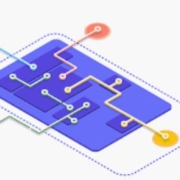Improve Customer Experience With Artificial Intelligence
Use these 5 steps to select the best AI solution for getting a faster, real-time understanding of your customers.
Better customer experience (CX), which leads to improved customer satisfaction, loyalty and advocacy, is a goal across many organizations. A good understanding of customers is the first step toward an excellent customer experience, and leveraging artificial intelligence (AI) can help accelerate this understanding.
Machine learning, natural-language understanding and natural-language processing can help analyze customer sentiment and customer feedback at scale
The areas where AI can help include sales and marketing. AI tools offer white-space analysis for sales and can recommend immediate action on opportunities. In marketing, AI-powered solutions enable organizations to generate highly personalized messages at a scale that could not have been achieved using humans alone. Additionally, virtual customer assistants powered by AI can be used to improve the customer experience by reducing time to response.
“Among the many technology trends shaping 2019 and beyond, the adoption of AI when it comes to CX is one of the most exciting,” says Jessica Ekholm, VP Analyst, Gartner. “The use of AI technologies such as machine learning, natural-language understanding and natural-language processing can help analyze customer sentiment and customer feedback at scale, precision and speed not achievable through humans.”
Strategic Planning Guides for Leaders Across the Enterprise
Ekholm shares a five-step methodology for how application leaders can use AI to get faster, real-time understanding of customers.
Step 1. Formulate the customer experience strategy
Before looking into what AI can do, you must have a CX vision and strategy in place. If there isn’t one already, take an active part in crafting one. Application leaders should lead the CX initiative together with a dedicated CX leader, or a customer service or customer relations lead, or the chief marketing officer.
Step 2. Map and analyze customer journeys
Map and analyze current customer journeys to understand the touchpoints and experiences that customers have with your brand — from discovery, presales, sales, customer service and beyond. A better understanding of how customers experience a brand provides the foundation on which AI can be used to improve customer journeys and benefit the business.
Step 3. Get familiar with AI solution(s) suitable for understanding customers faster and more efficiently
Your organization may already have a wealth of valuable data from current CX tools, customer service and sales reps, social media, Net Promoter Scores and Customer Effort Scores; however, most of this data fails to reveal rich real-time customer insight. By using AI technologies it is possible to categorize, organize and analyze customer data in real time, whether to analyze the written or spoken word, and ultimately understand customer sentiment.
Step 4. Decide whether to build or buy
Application leaders must decide whether to build or buy an AI solution. Decide if there’s enough skills and budget to create it in-house or if your organization is better off buying a CX/AI solution. When buying a solution, focus on how well the vendor prioritizes and how well they handle critical customer-understanding issues. Ensure the vendor will focus on this area through proofs of concepts or pilots.
Step 5. Track and measure success
Measurement is the only way to answer the question “Is it working?” Find the metrics and key performance indicators to track the success of an AI/CX initiative. Aim for “early quick wins,” initiatives that can be tracked easily and have the ability to show success (or failure) fast, to build momentum for future initiatives.
Get Smarter
Gartner CIO Conferences
Learn about CIO leadership and how to lead your enterprise through its digital journey.











